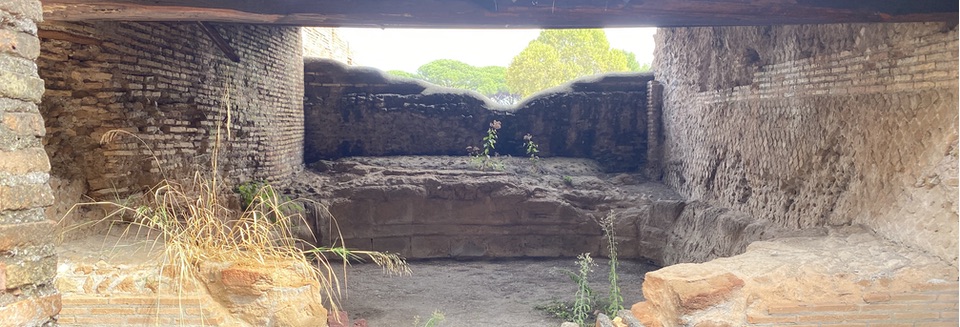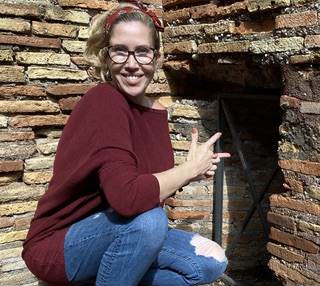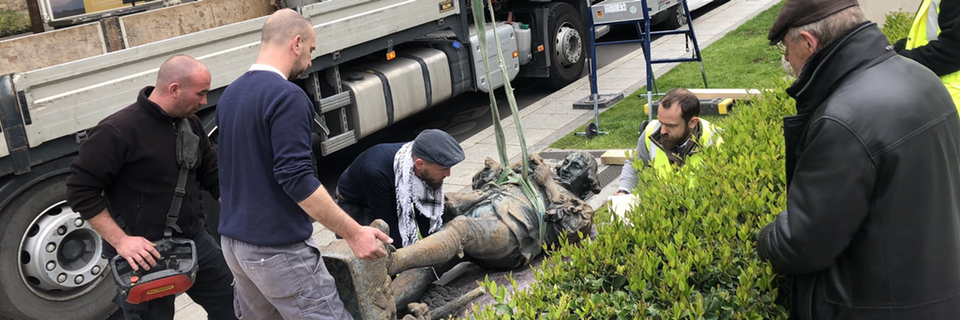Podcast: Play in new window | Download (Duration: 16:07 — 14.9MB)
Subscribe: Google Podcasts | Spotify | Android | RSS | More
 Bologna likes to think of itself as the pinnacle of food culture in Italy, so it is a bit of a wonder that it took until the 5th edition of the Biennial of Photography on Industry and Work to focus attention on food. All of the 11 exhibitions were really interesting and well curated, not least because they were often in glorious spaces that are not normally open to the public, resulting in some very fine cultural juxtapositions. But there was one that really caught my eye because it offered literally a new view of the foundations of America’s appetite for cheap beef. Almost as soon as I got home I arranged to chat to the artist, Mishka Henner, about his work.
Bologna likes to think of itself as the pinnacle of food culture in Italy, so it is a bit of a wonder that it took until the 5th edition of the Biennial of Photography on Industry and Work to focus attention on food. All of the 11 exhibitions were really interesting and well curated, not least because they were often in glorious spaces that are not normally open to the public, resulting in some very fine cultural juxtapositions. But there was one that really caught my eye because it offered literally a new view of the foundations of America’s appetite for cheap beef. Almost as soon as I got home I arranged to chat to the artist, Mishka Henner, about his work.
Notes
- Mishka Henner’s work is at his website and you can follow him on Instagram. There’s also a profile of him in The New York Times.
- All the images are taken from Mishka Henner’s originals.
- Extra music started with a track from Jack Bailey.
- Transcript now available.







 Rachel Roddy is a marvellous conduit between the many cultures and kitchens of her adopted homeland and a world that simply cannot get enough of Italy. Her latest book is all about pasta, although she wisely recognised that there was little point in trying to be encyclopaedic. Instead, she chose 50 shapes on which to hang history, culture, personal stories and, of course, recipes and suggestions.
Rachel Roddy is a marvellous conduit between the many cultures and kitchens of her adopted homeland and a world that simply cannot get enough of Italy. Her latest book is all about pasta, although she wisely recognised that there was little point in trying to be encyclopaedic. Instead, she chose 50 shapes on which to hang history, culture, personal stories and, of course, recipes and suggestions. 
 After the partition of India and Pakistan in 1947, a chef brought the tandoor oven and his tandoori chicken from Peshawar to a new restaurant he opened in Delhi, the Moti Mahal. There, he created makkhani murghi, butter chicken; tandoori chicken in a sauce that combines tomatoes, butter and cream. Seventy years later, the internet was overrun by a recipe for an “easy, authentic, creamy, spicy, and delicious” version of the “traditional Indian restaurant dish”. Urvashi Pitre, who created that recipe, shot to fame and a book deal as the Butter Chicken Lady.
After the partition of India and Pakistan in 1947, a chef brought the tandoor oven and his tandoori chicken from Peshawar to a new restaurant he opened in Delhi, the Moti Mahal. There, he created makkhani murghi, butter chicken; tandoori chicken in a sauce that combines tomatoes, butter and cream. Seventy years later, the internet was overrun by a recipe for an “easy, authentic, creamy, spicy, and delicious” version of the “traditional Indian restaurant dish”. Urvashi Pitre, who created that recipe, shot to fame and a book deal as the Butter Chicken Lady.